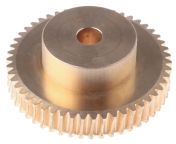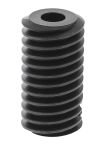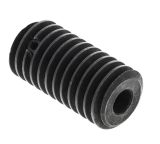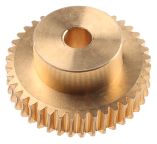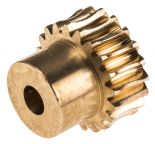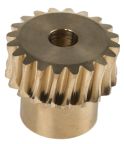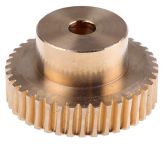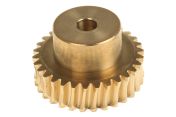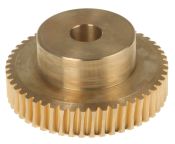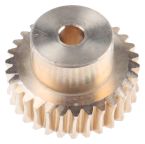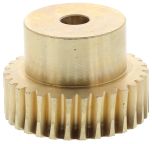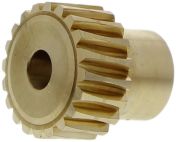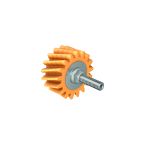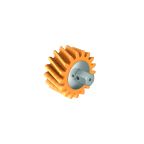Worm & Pinion Gears
Worm and pinion gears, also referred to as worm wheel gears, are types of gear compositions used in a wide range of industrial and domestic applications that require very large reduction ratios to be achieved with higher torque. The worm gear resembles a threaded shaft that utilises teeth to drive the gear, allowing for machinery and components to operate. Each time the shaft or worm spins one revolution, the gear turns forward by only one tooth. Therefore, if the gear has 50 teeth, this creates a gear ratio of 50:1. To summarise, the pinion gear and worm work together in a gear arrangement often referred to as a worm drive. You can find out more in our worm gear guide.
How do worm and pinion gears work?
When rotational power is applied to the worm, say, using an electric motor, it rotates against the gear and transfers torque to the pinion gear similar to a spur gear. The system is designed so that the worm can easily turn the pinion gear, but the gear cannot transmit motion back to the worm. When the gear tries to turn the worm, friction between the two elements prevents the worm from turning which is known as self-locking.
What are worm and pinion gears used for?
Worm and pinion gears can be found in domestic devices as well as in heavy machinery. They are useful for machines such as conveyor systems, tuning instruments, lifts and elevators, gates and in torsen differentials used in high-performance vehicles and trucks.
Related links
- What is a Worm Gear?
- RS PRO Bronze 1 Module Worm Wheel Gear 20 Tooth16mm Hub Dia., 20mm Pitch Dia. 14.5mm Face
- RS PRO Bronze 1 Module Worm Wheel Gear 50 Tooth30mm Hub Dia., 50mm Pitch Dia. 20mm Face
- RS PRO Bronze 1 Module Worm Wheel Gear 40 Tooth26mm Hub Dia., 40mm Pitch Dia. 16.5mm Face
- RS PRO Bronze 1 Module Worm Wheel Gear 20 Tooth16mm Hub Dia., 20.16mm Pitch Dia. 20mm Face
- RS PRO Bronze 0.8 Module Worm Wheel Gear 50 Tooth25mm Hub Dia., 40.06mm Pitch Dia. 18mm Face
- RS PRO Bronze 0.8 Module Worm Wheel Gear 40 Tooth20mm Hub Dia., 32.05mm Pitch Dia. 18mm Face
- RS PRO Bronze 0.8 Module Worm Wheel Gear 20 Tooth12mm Hub Dia., 16.03mm Pitch Dia. 18mm Face

